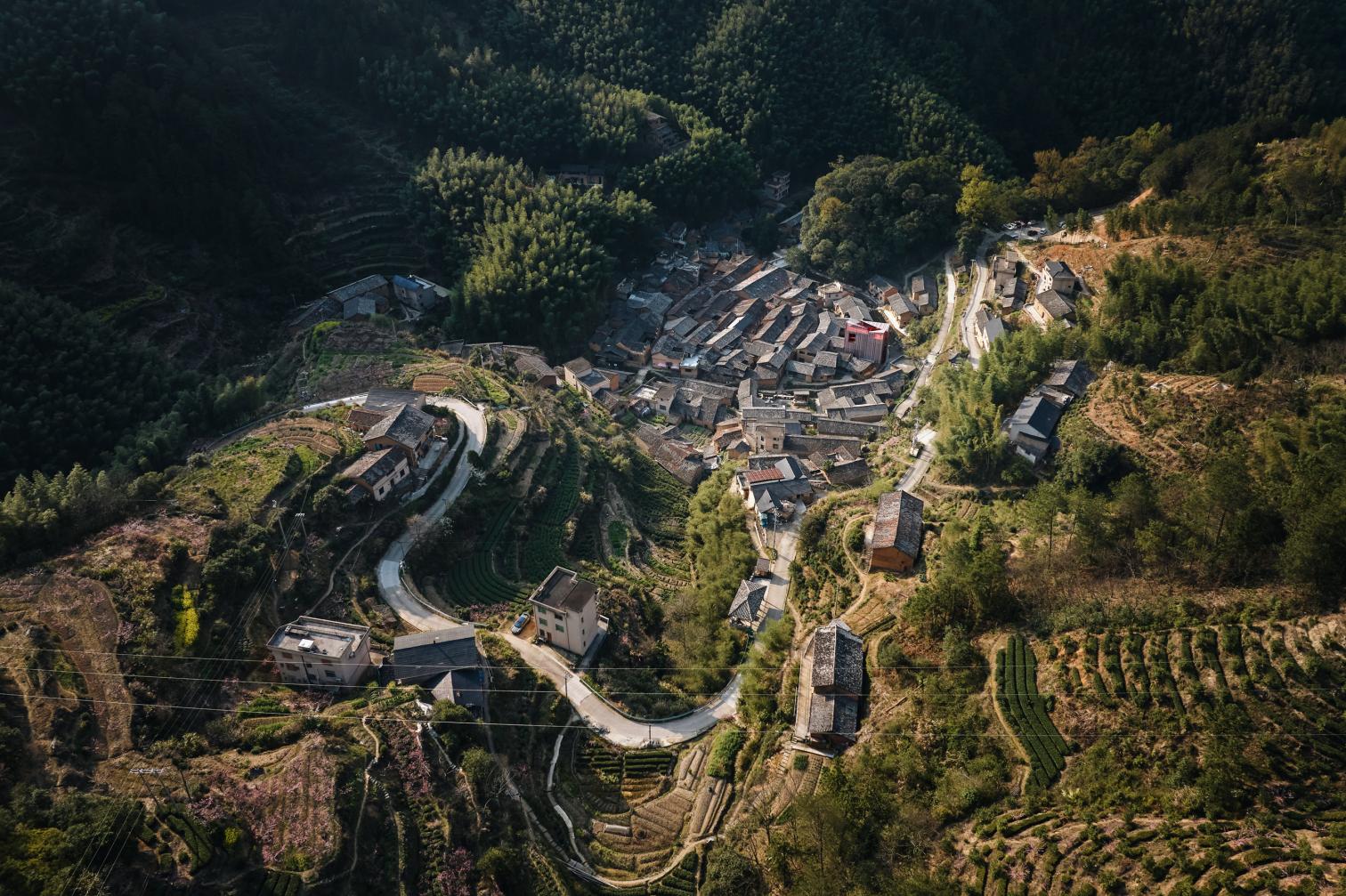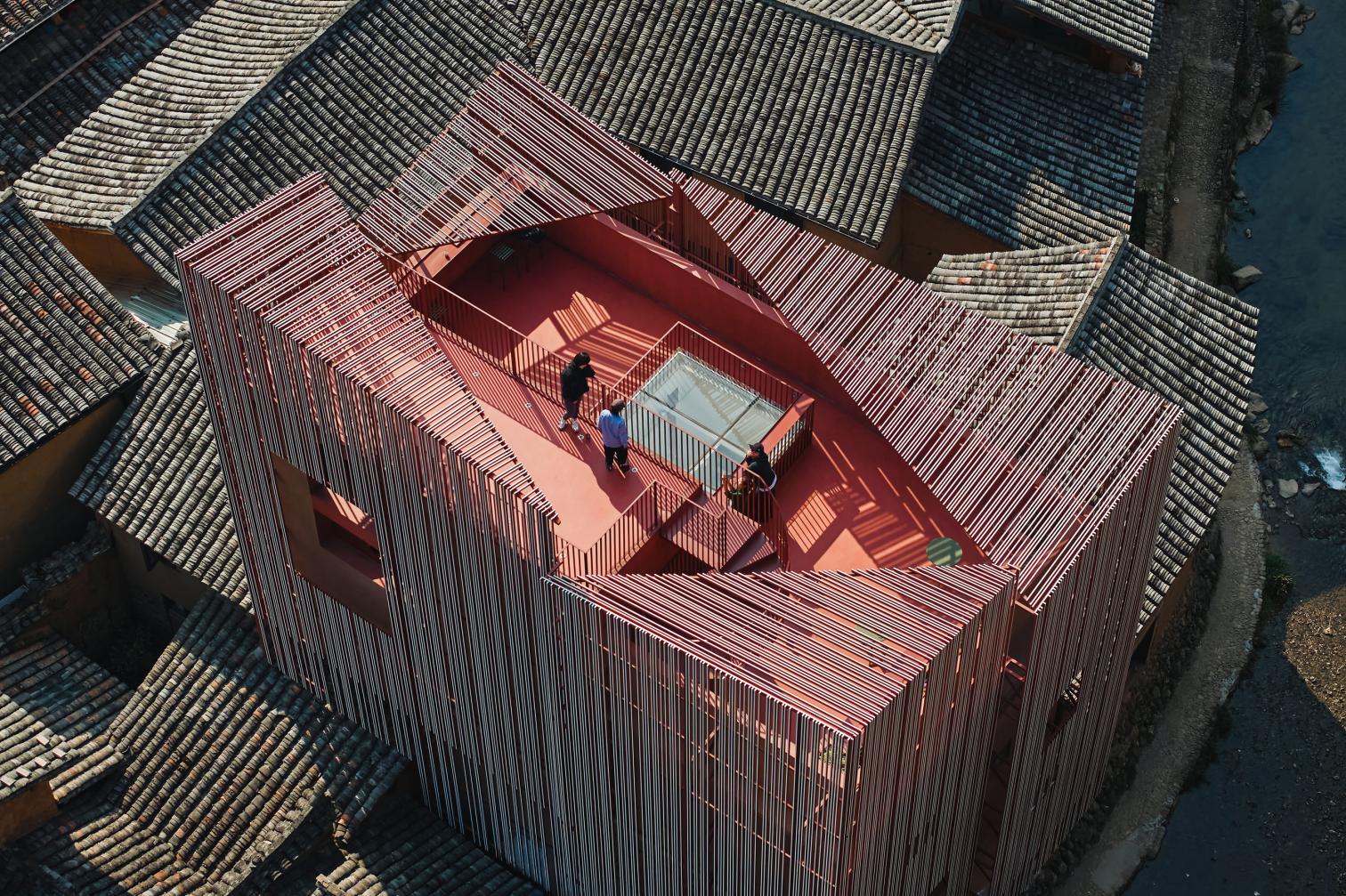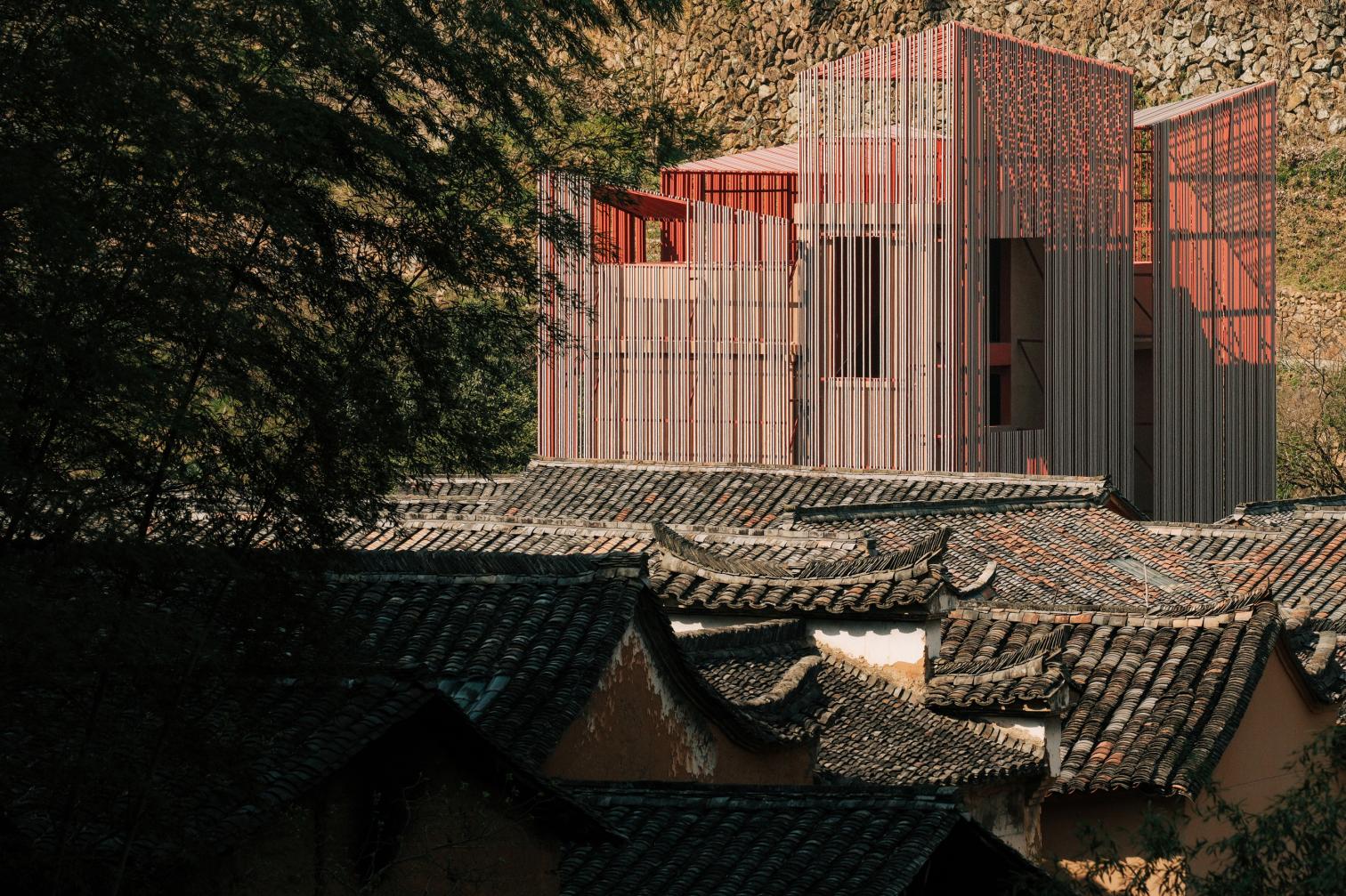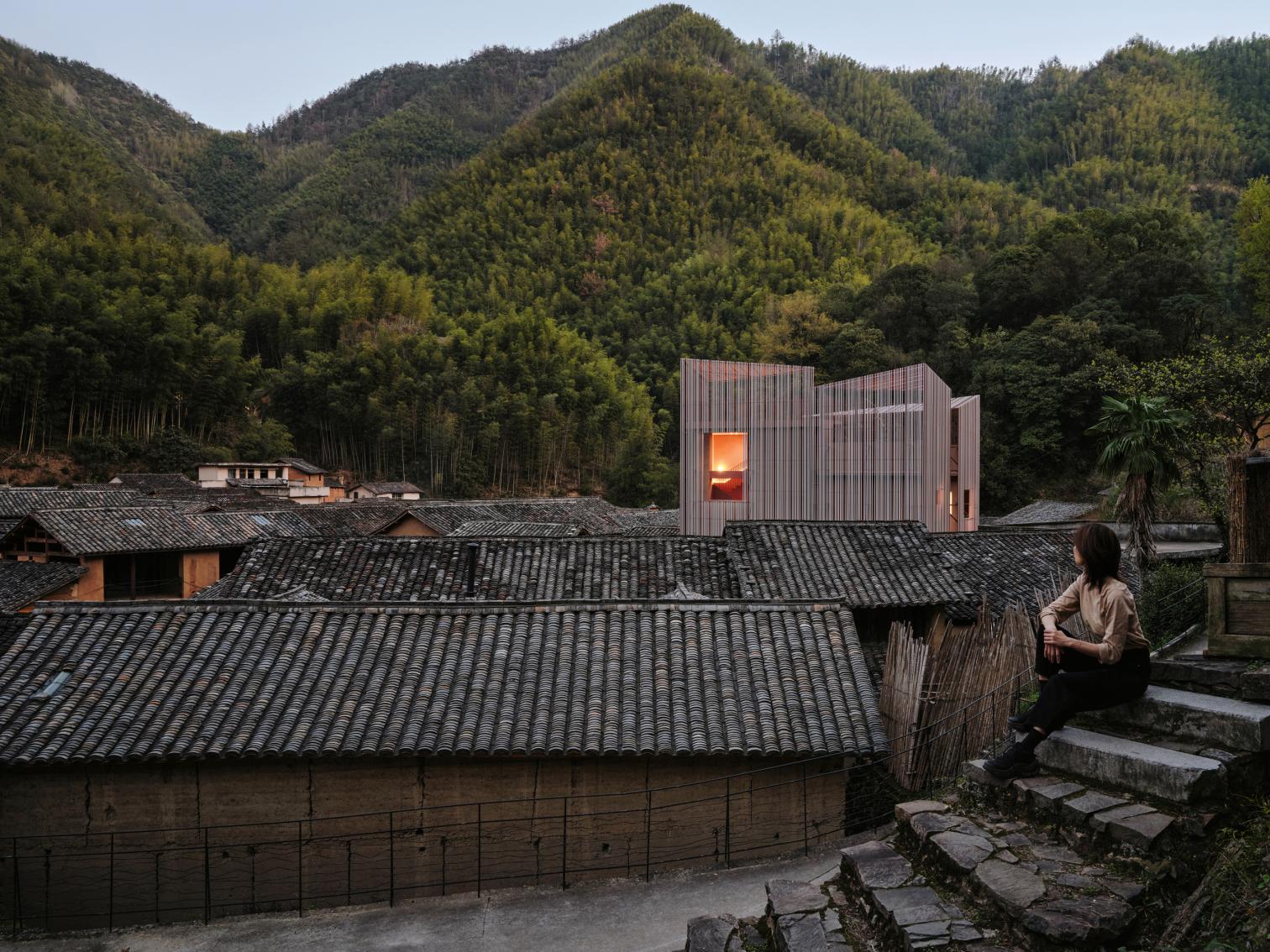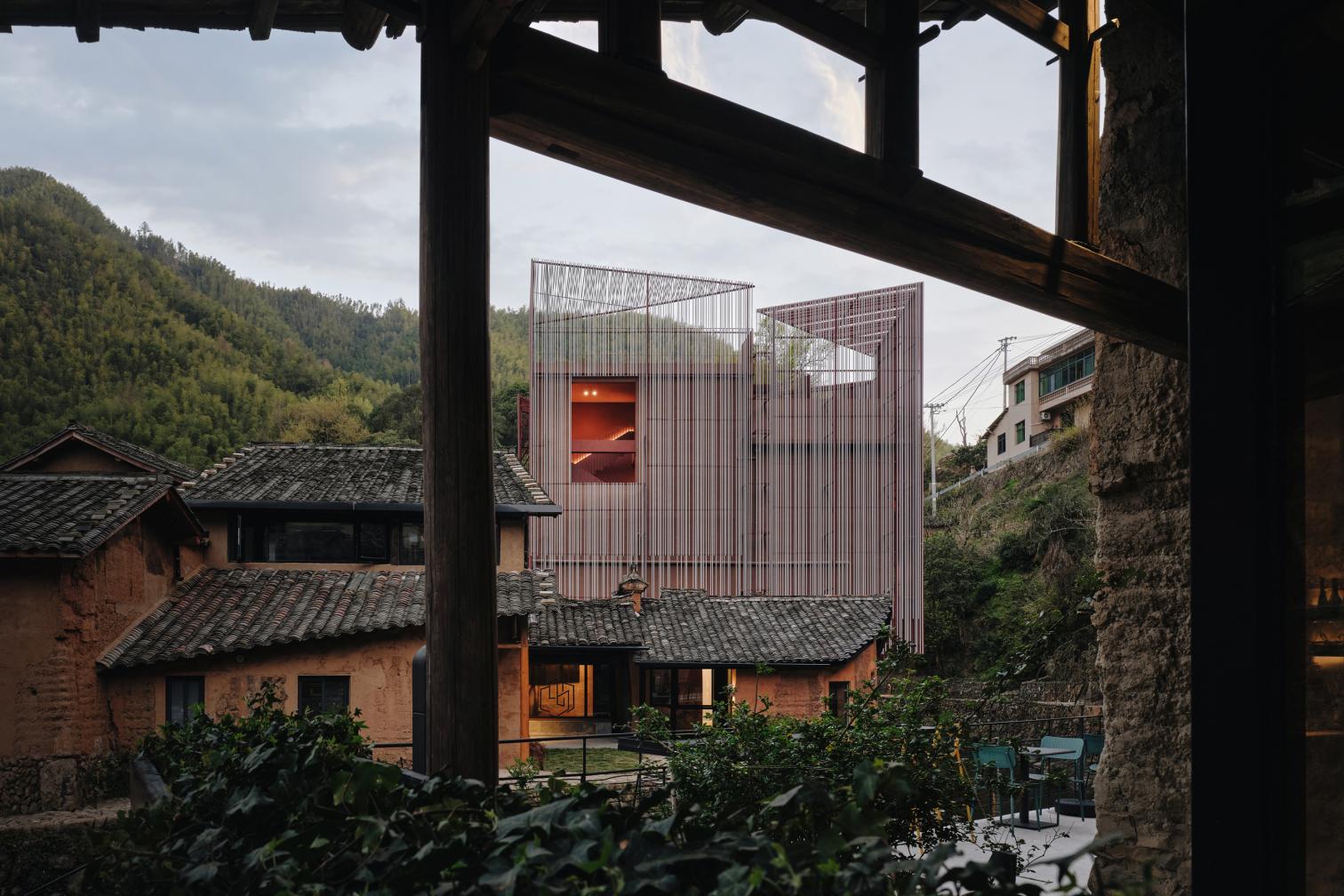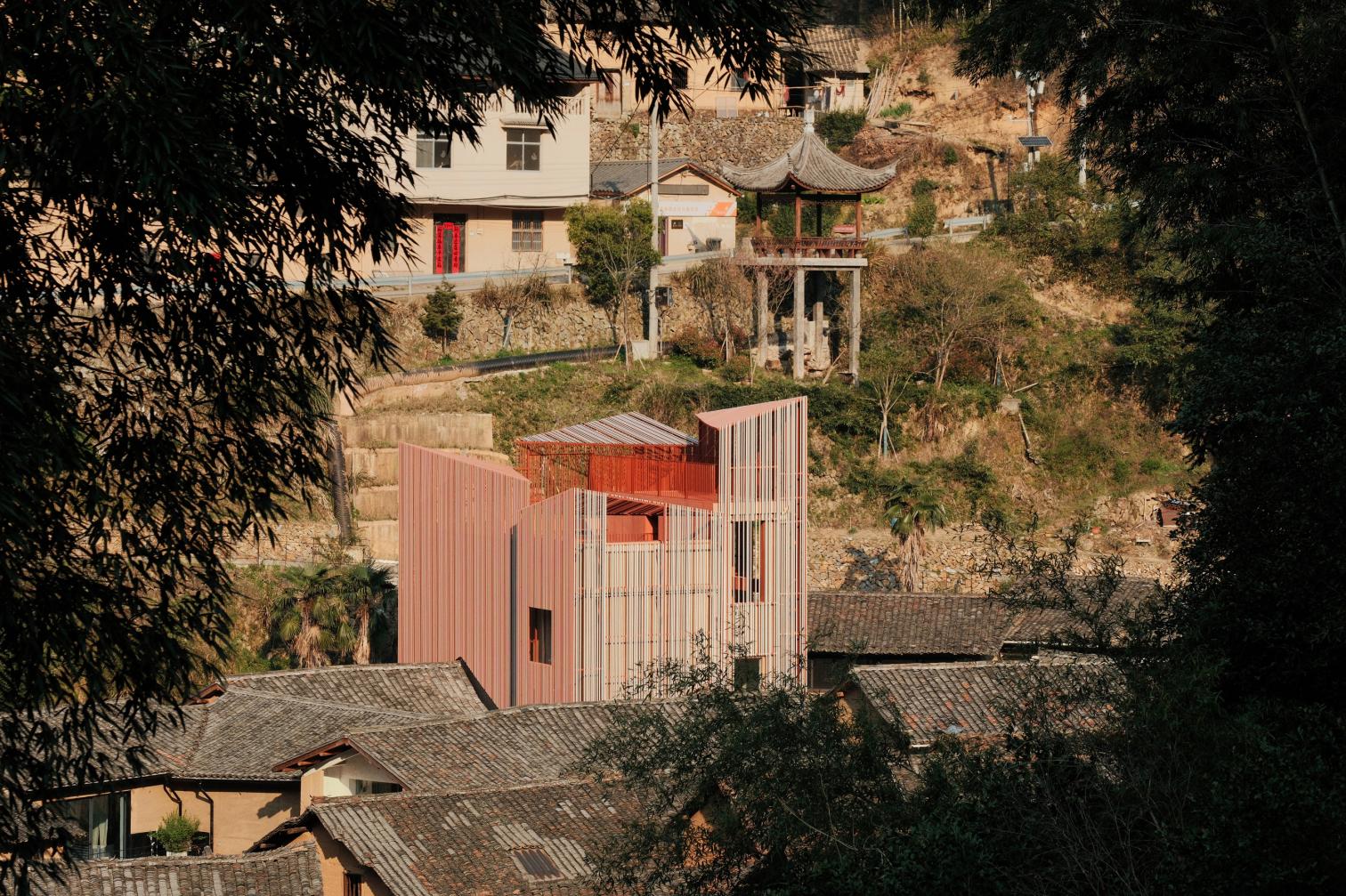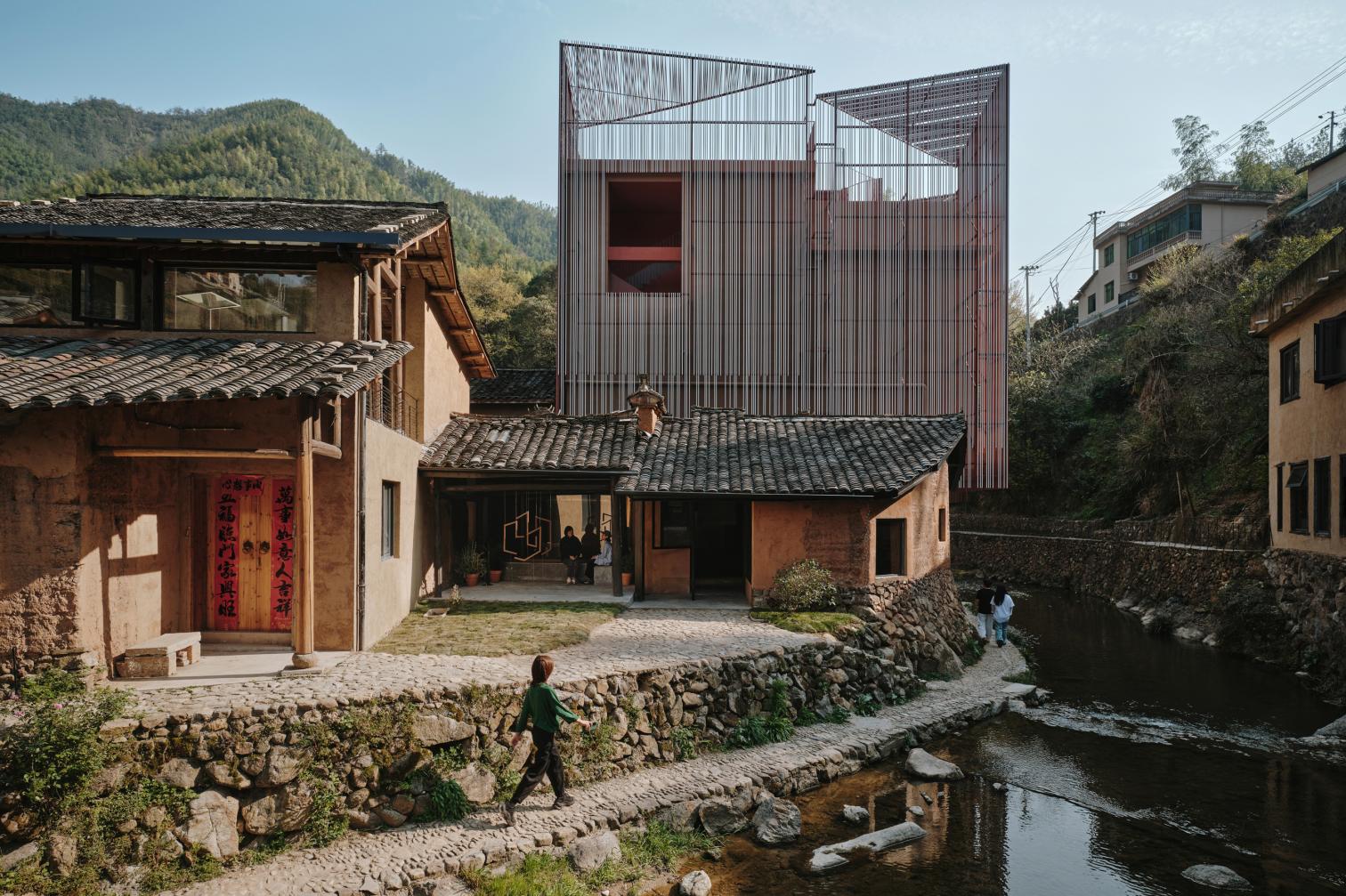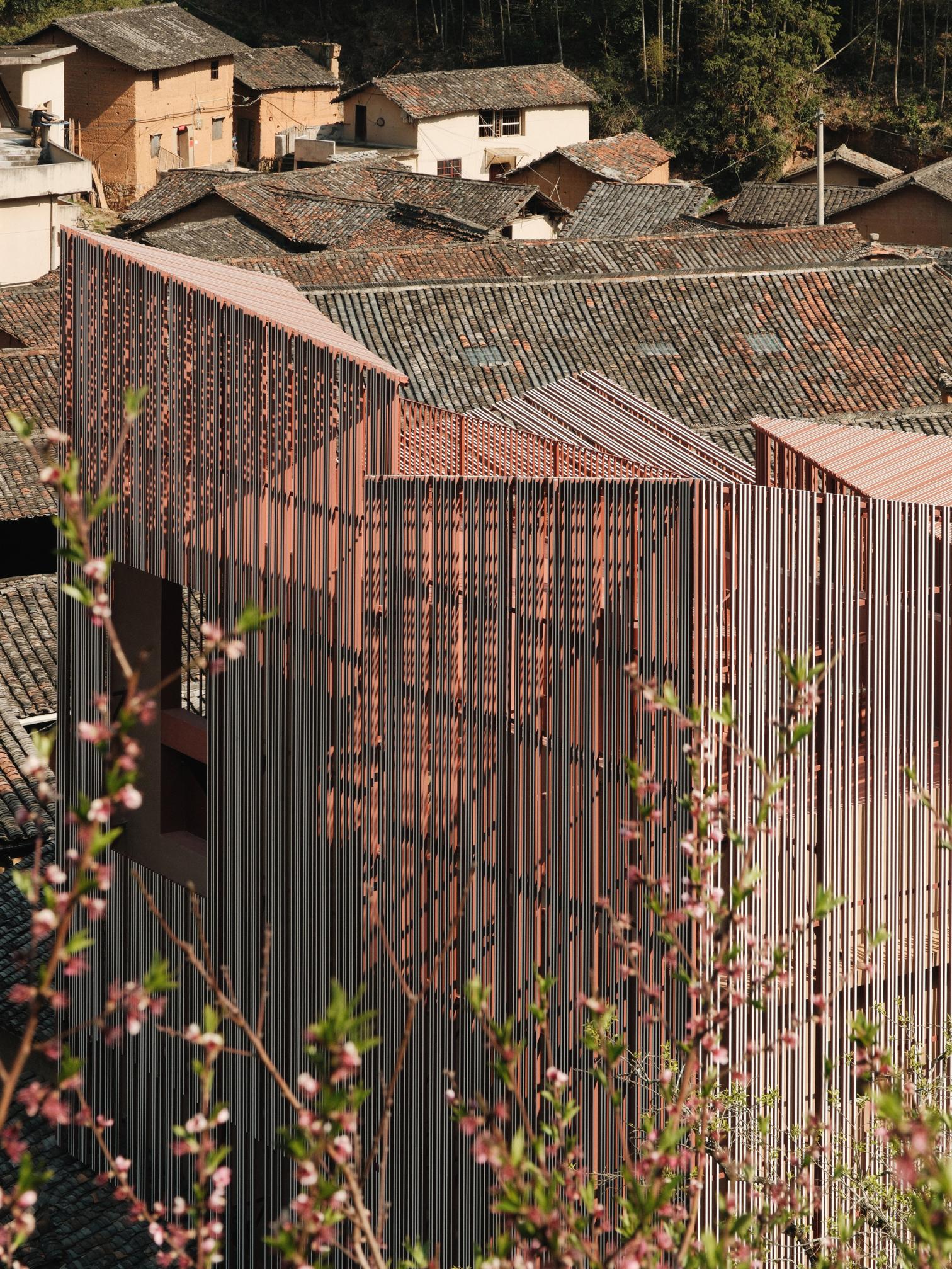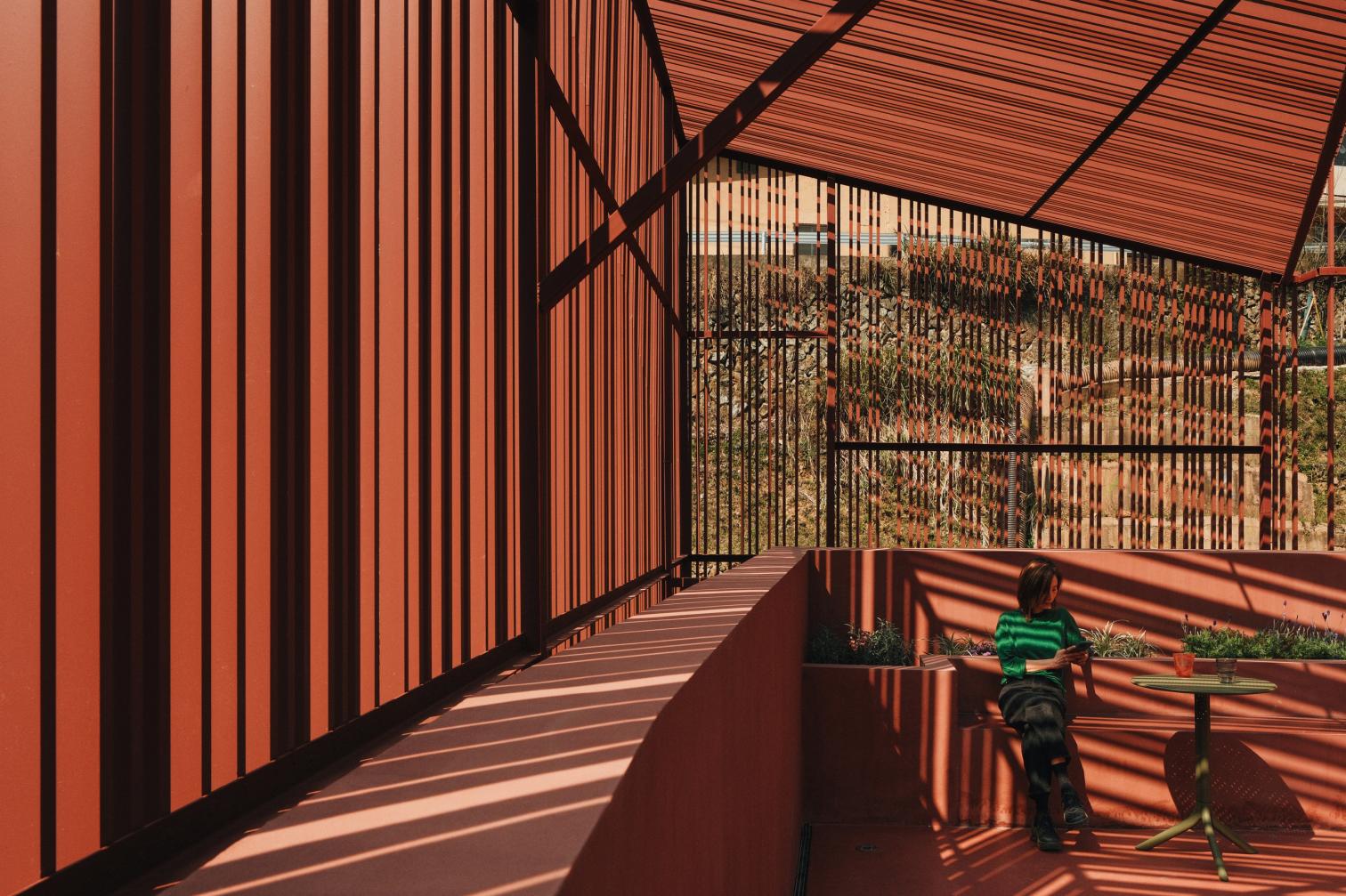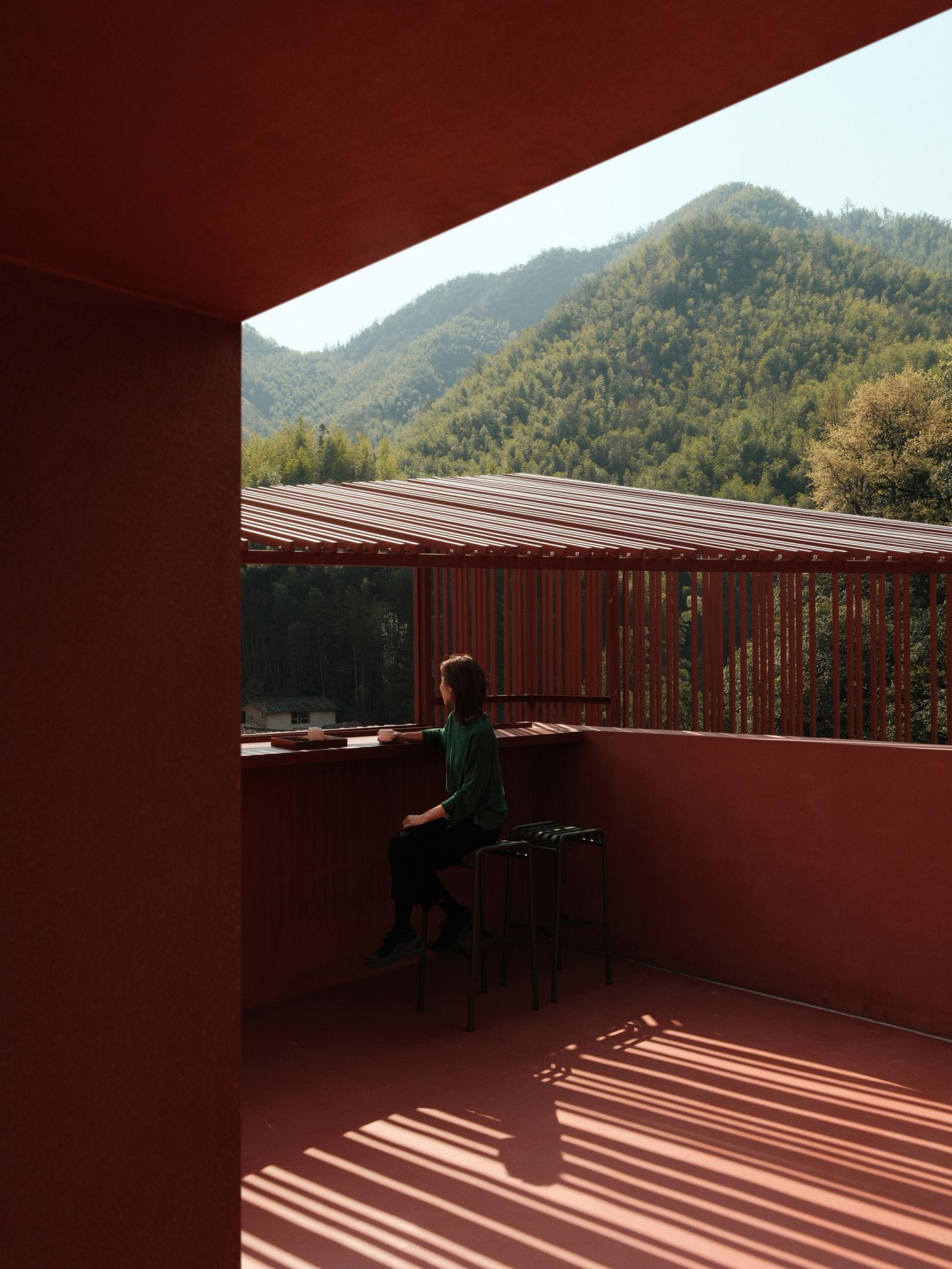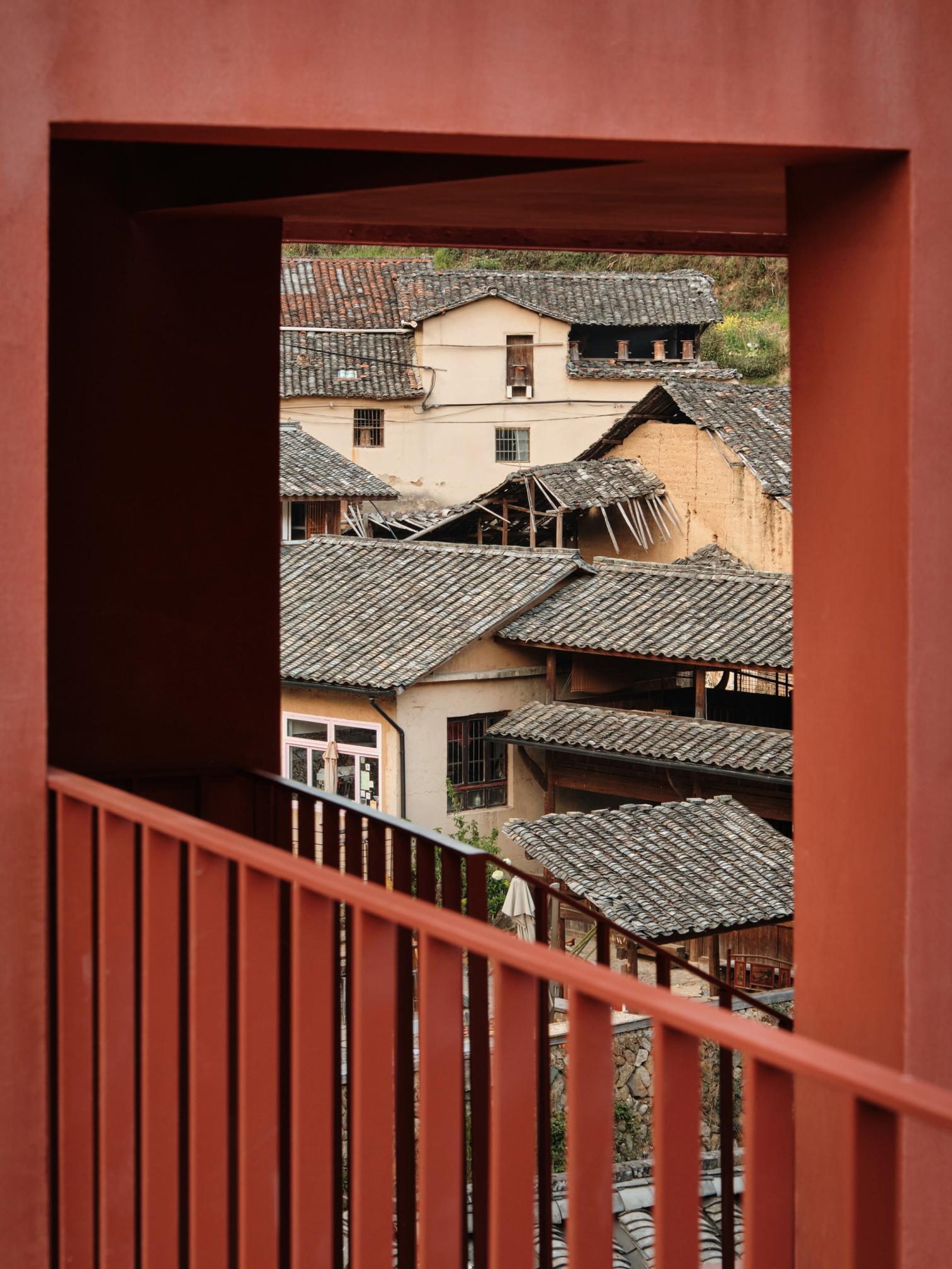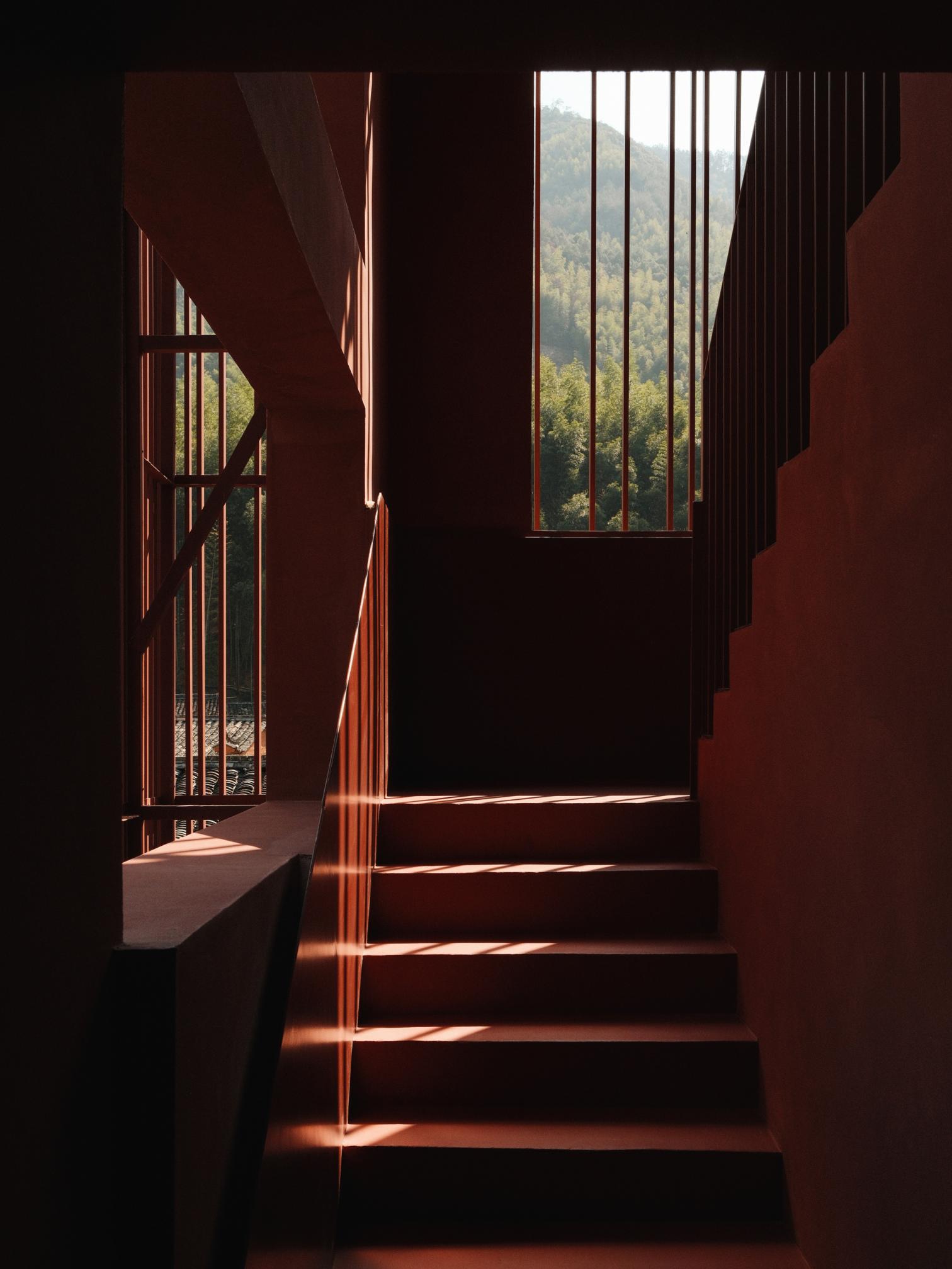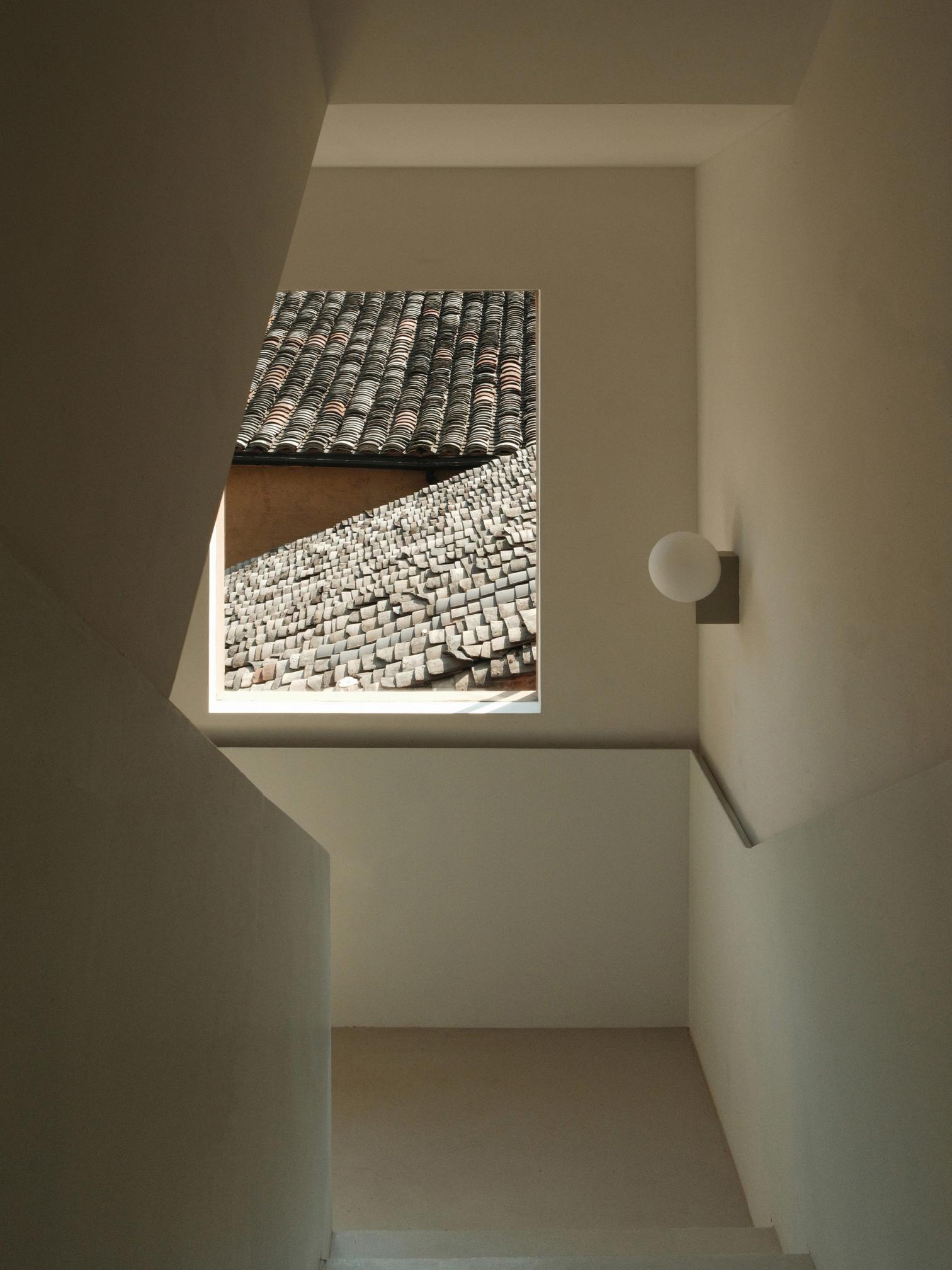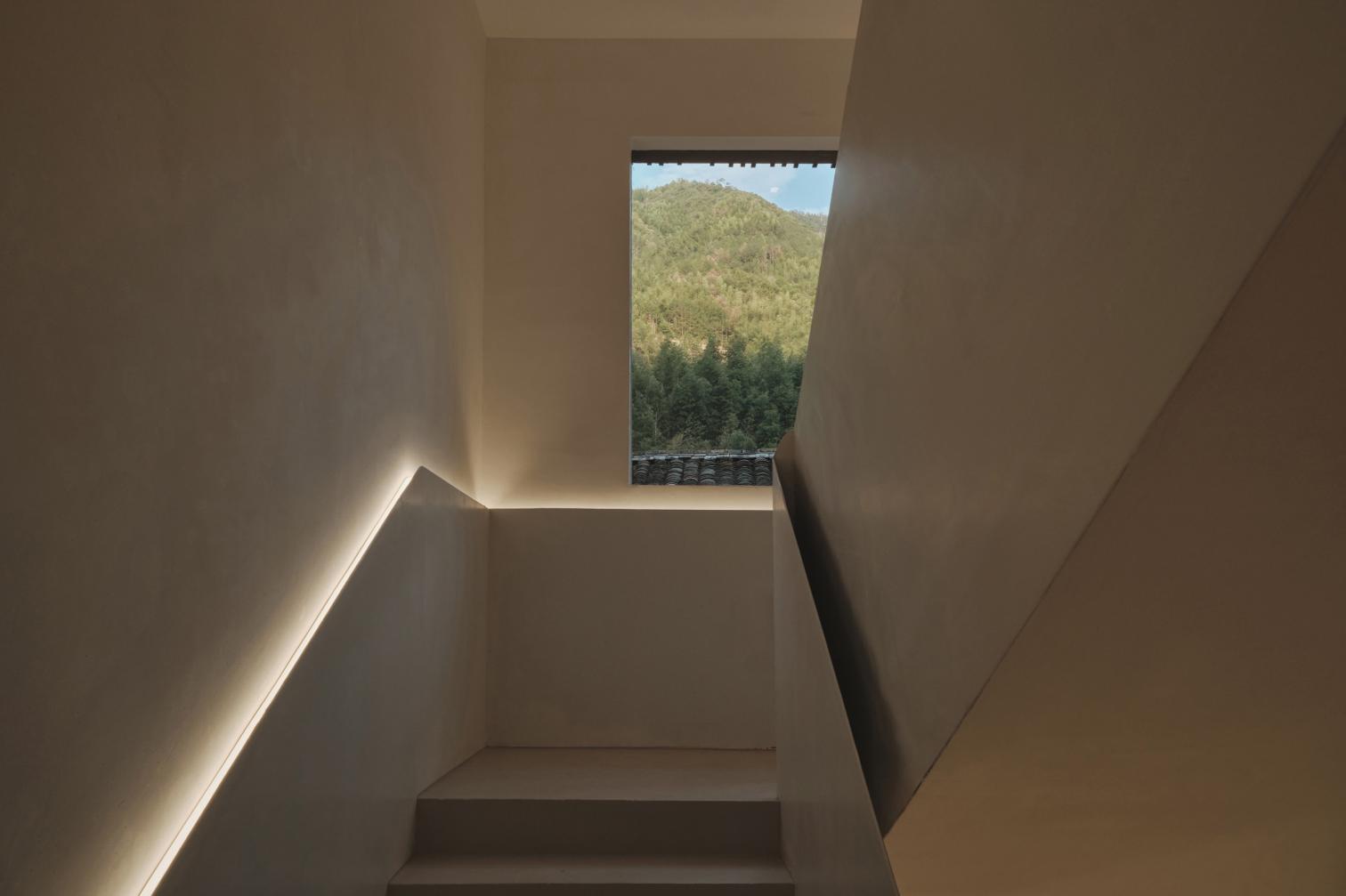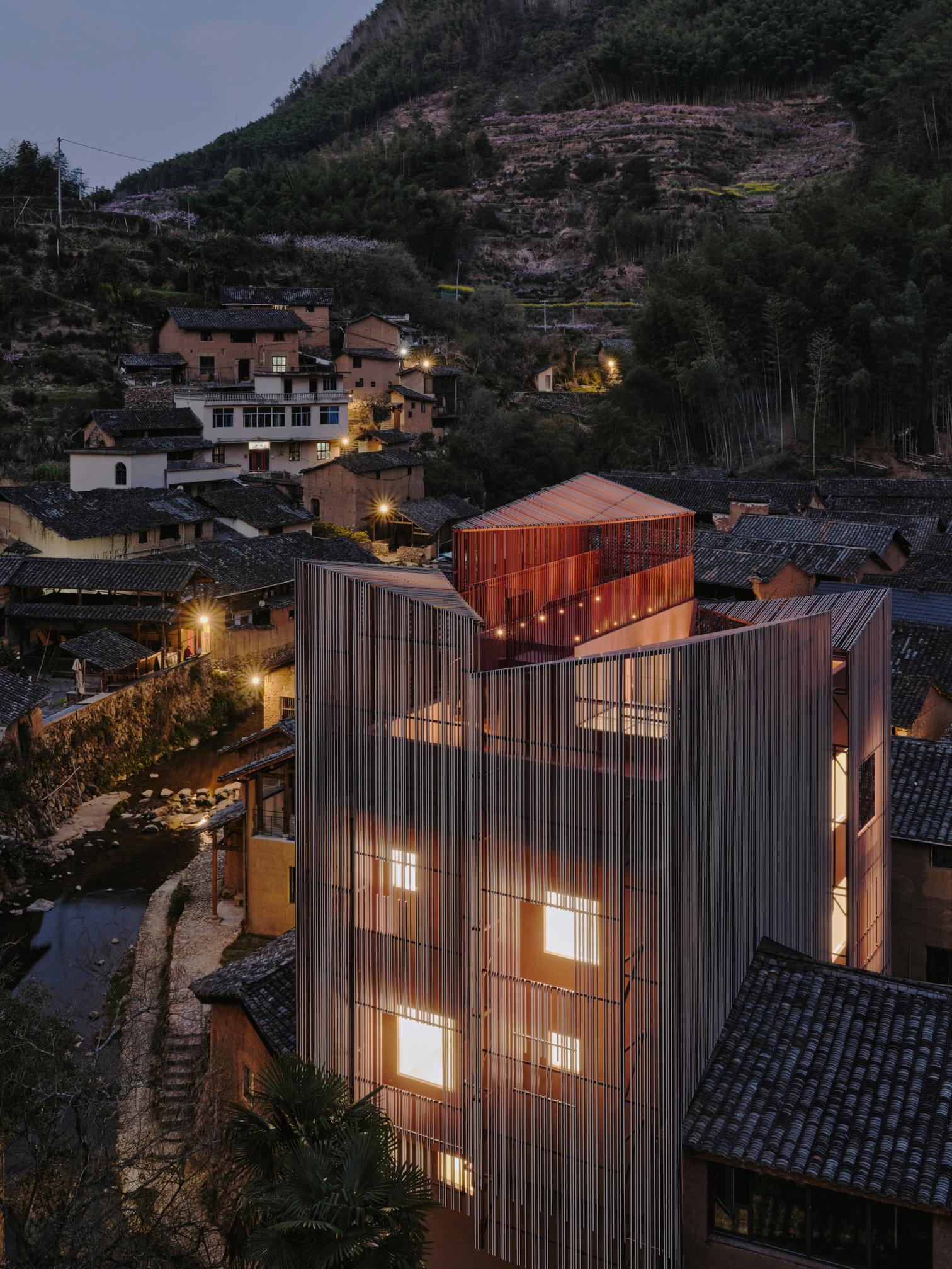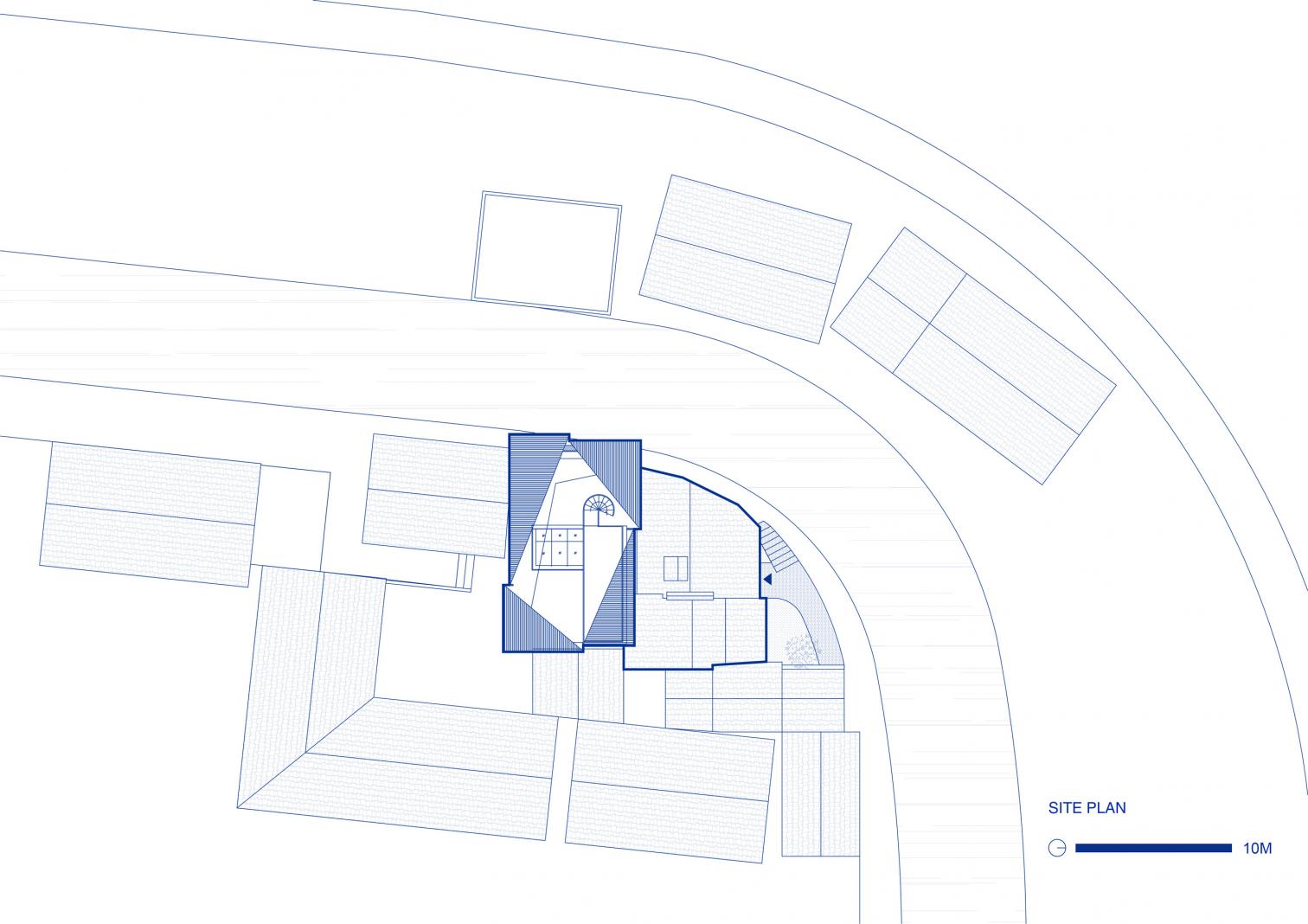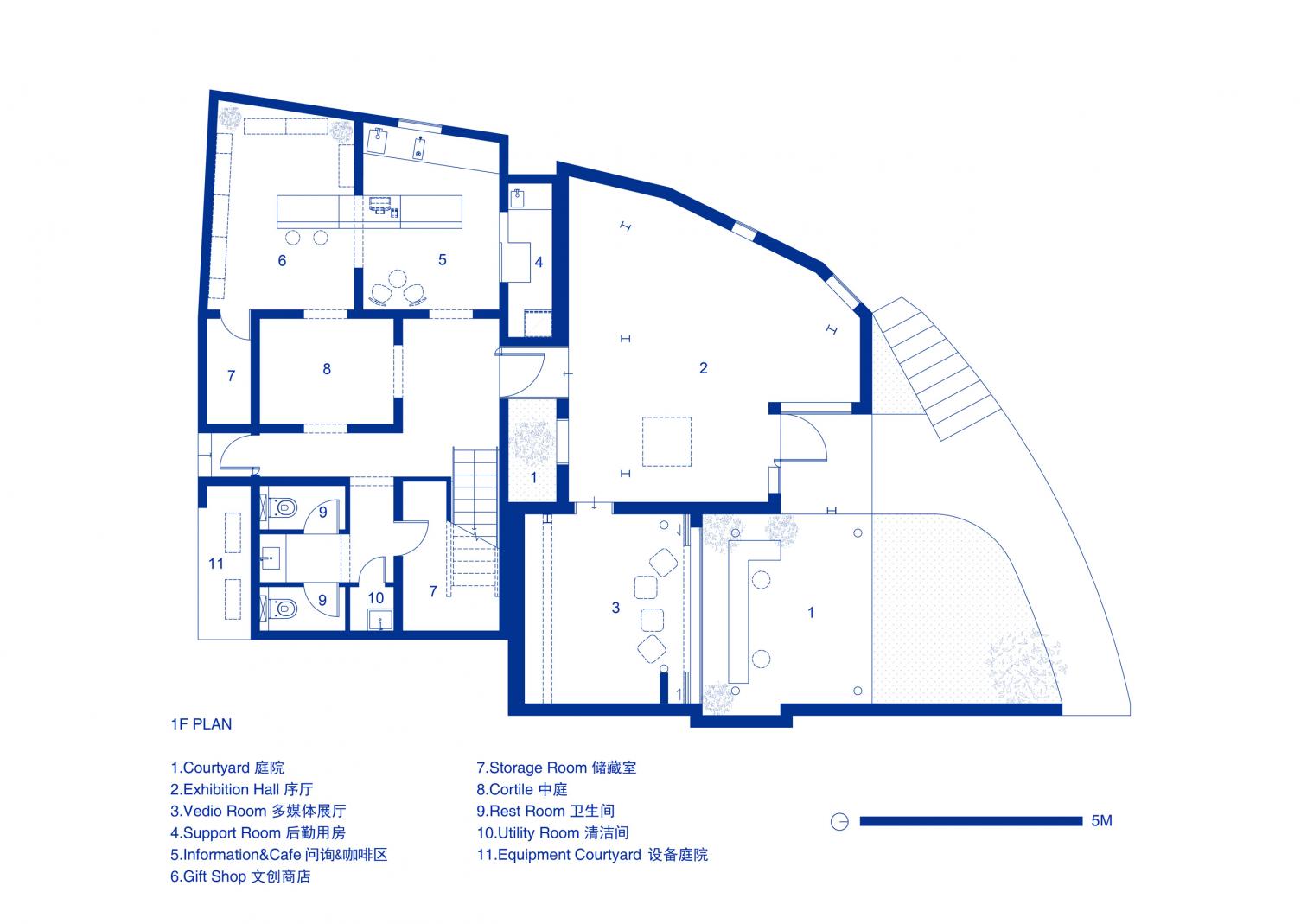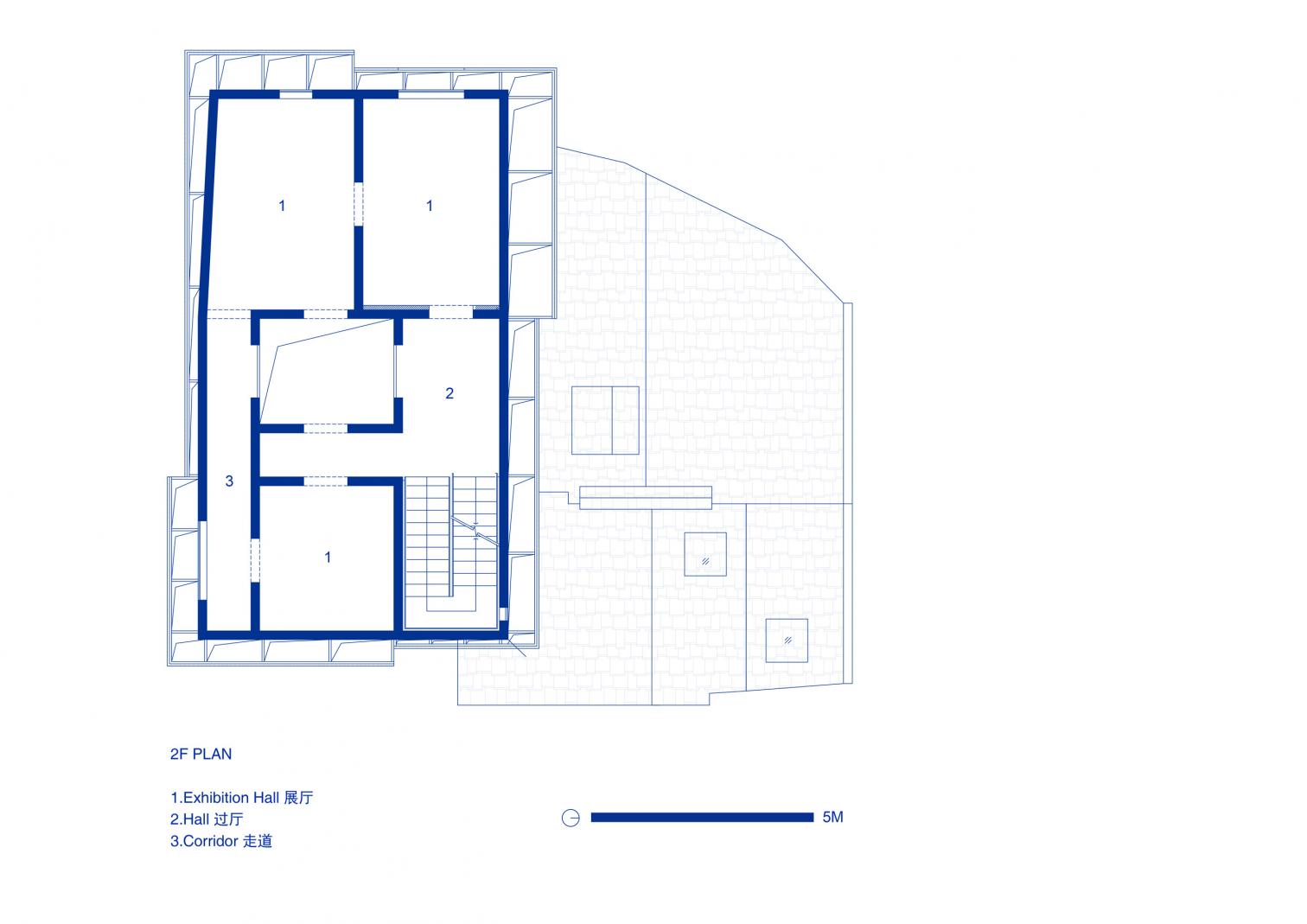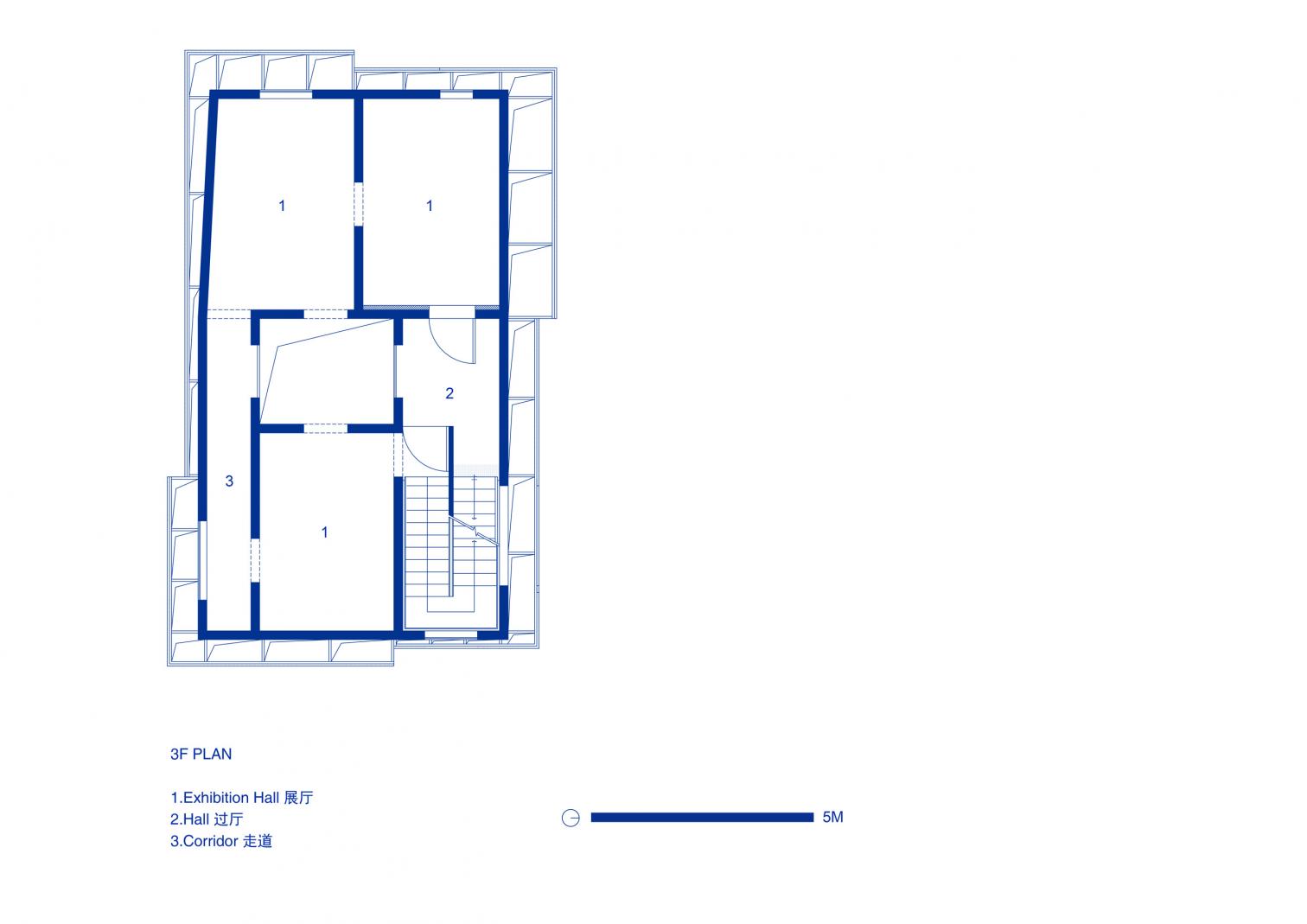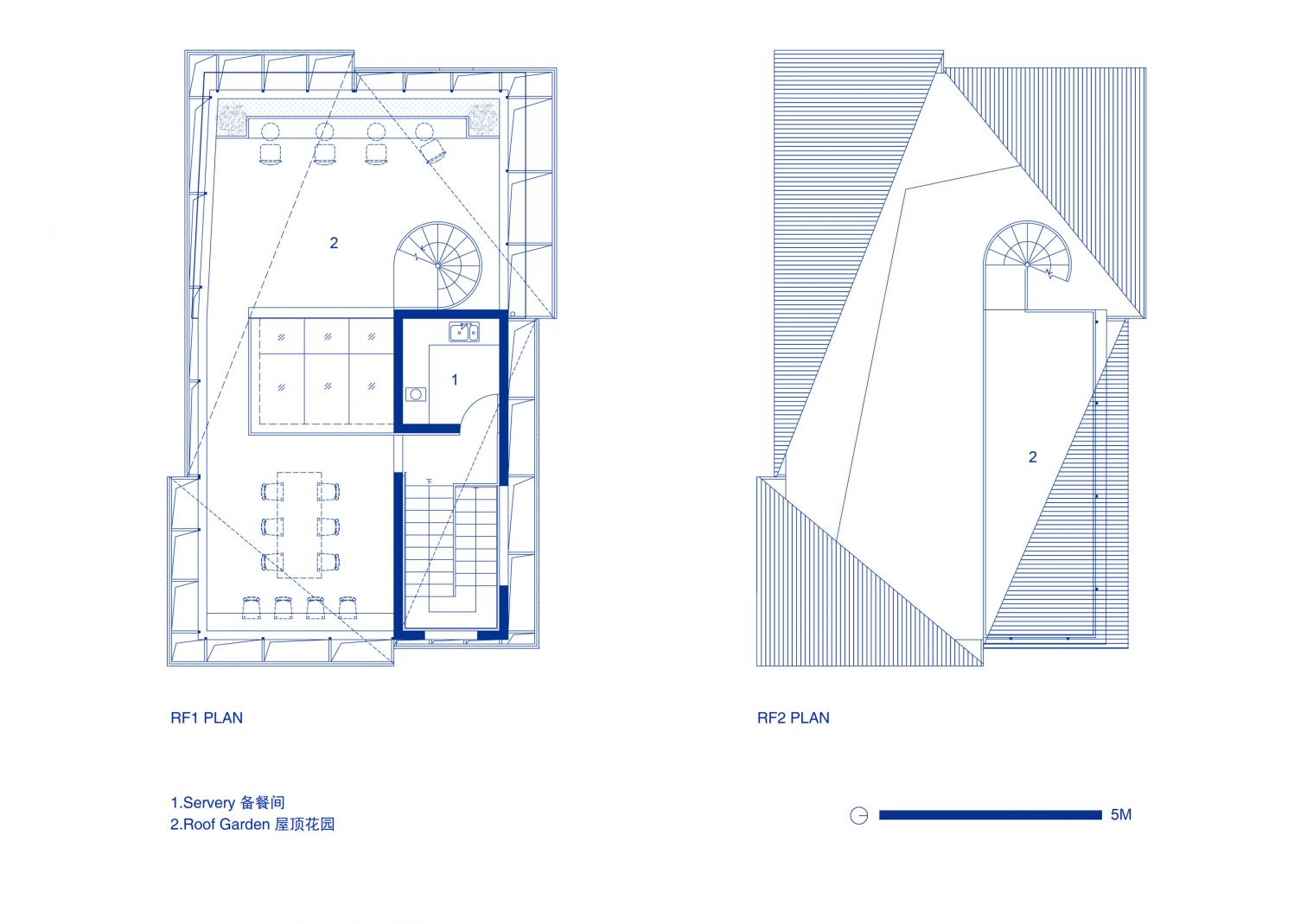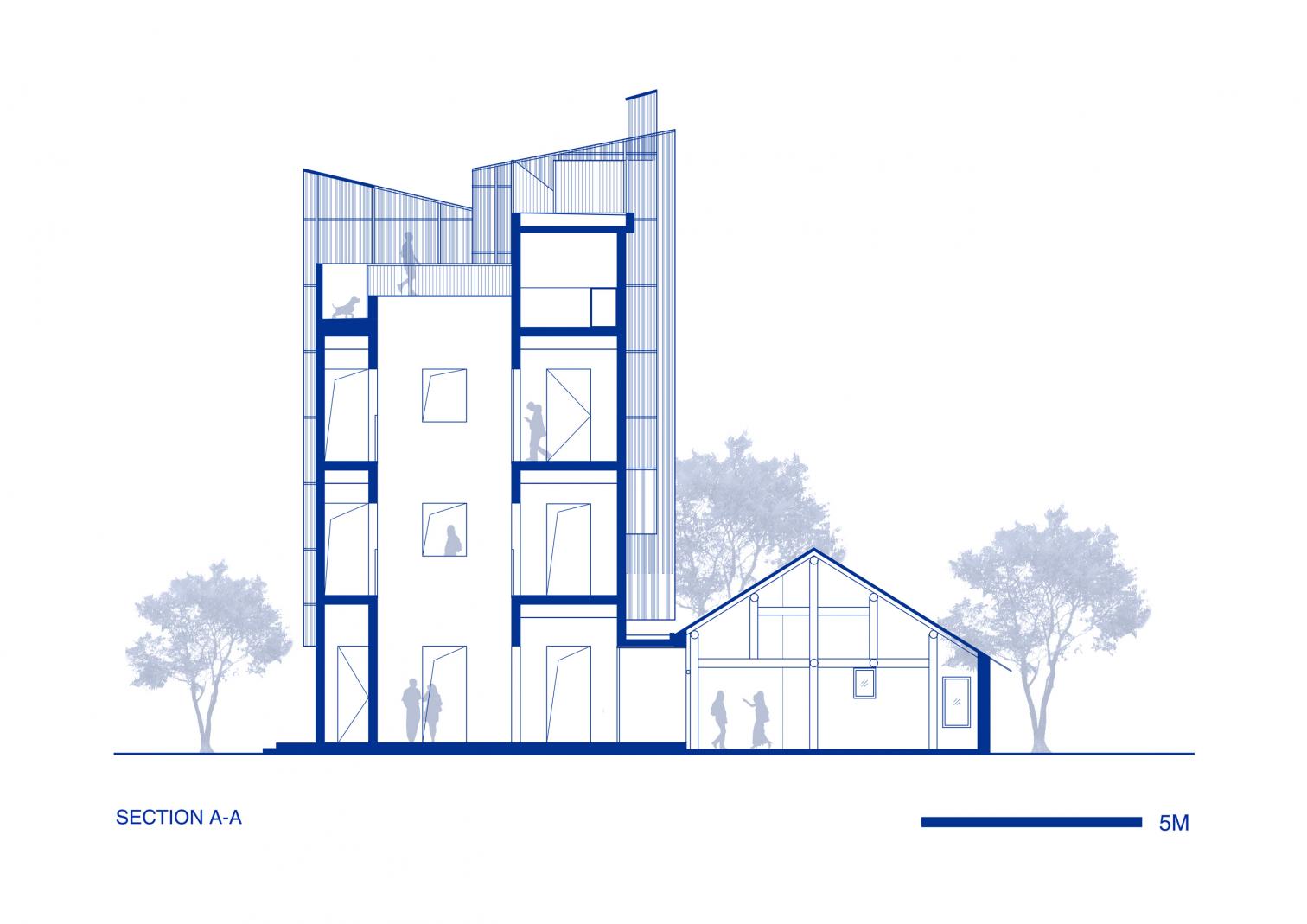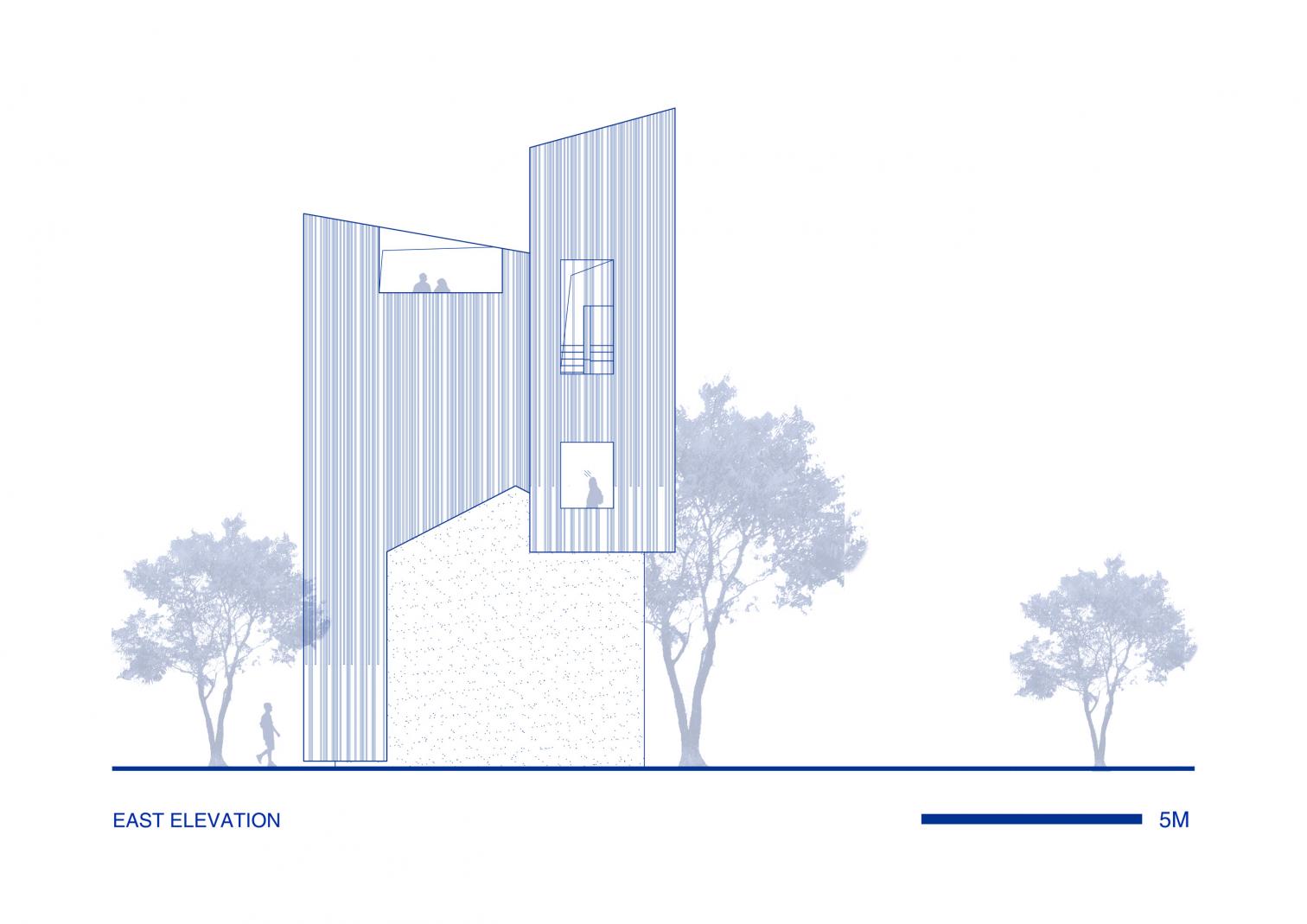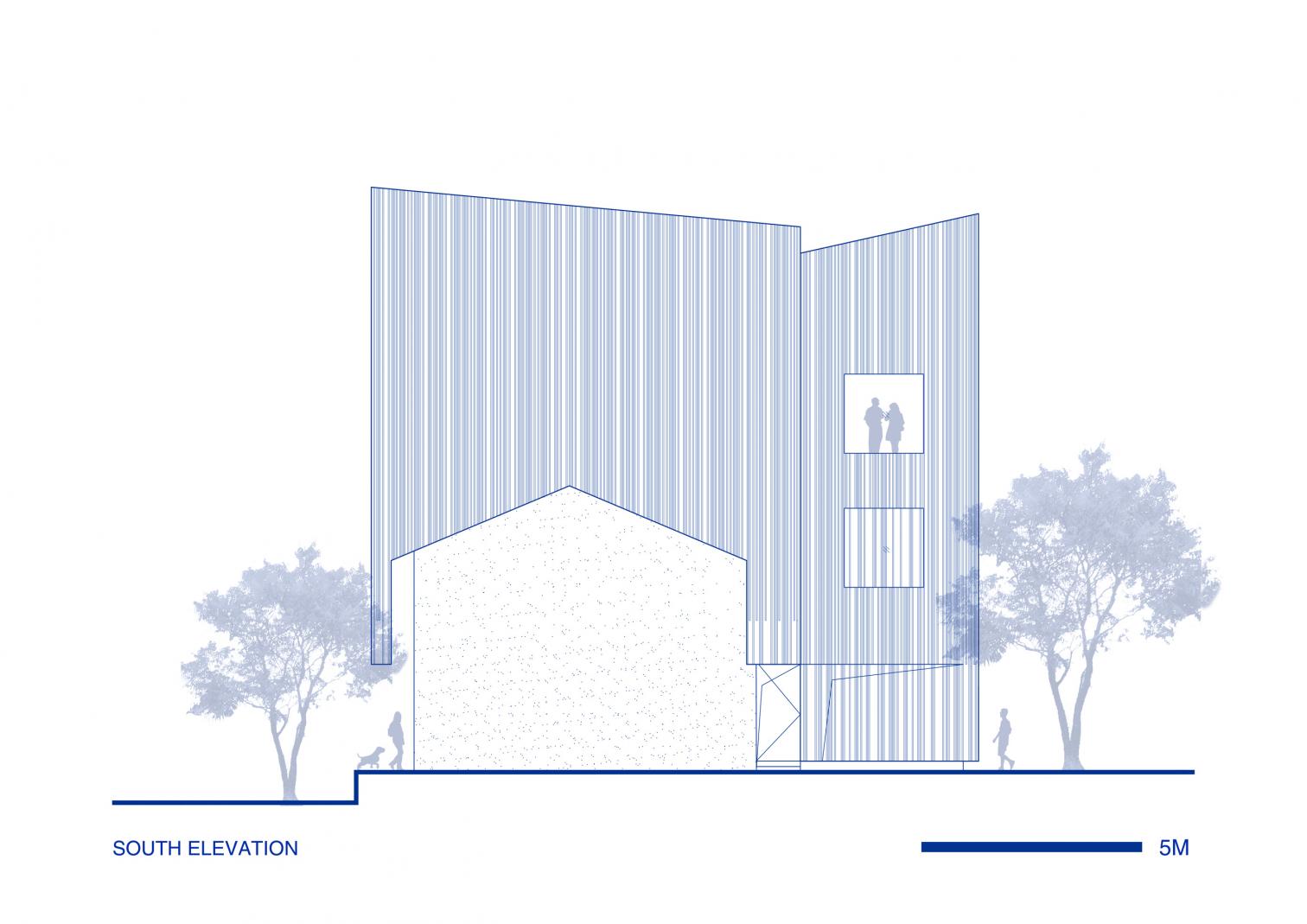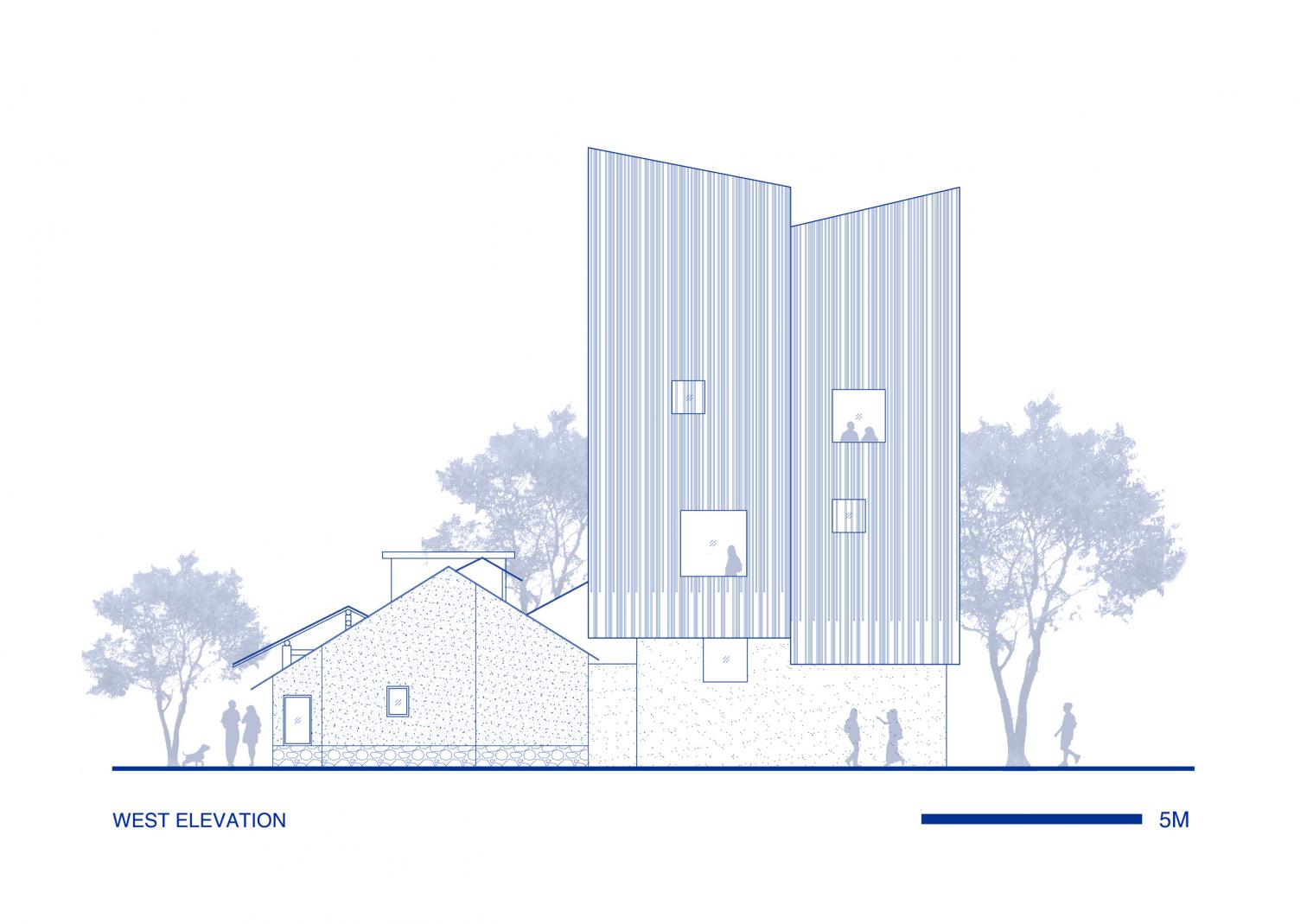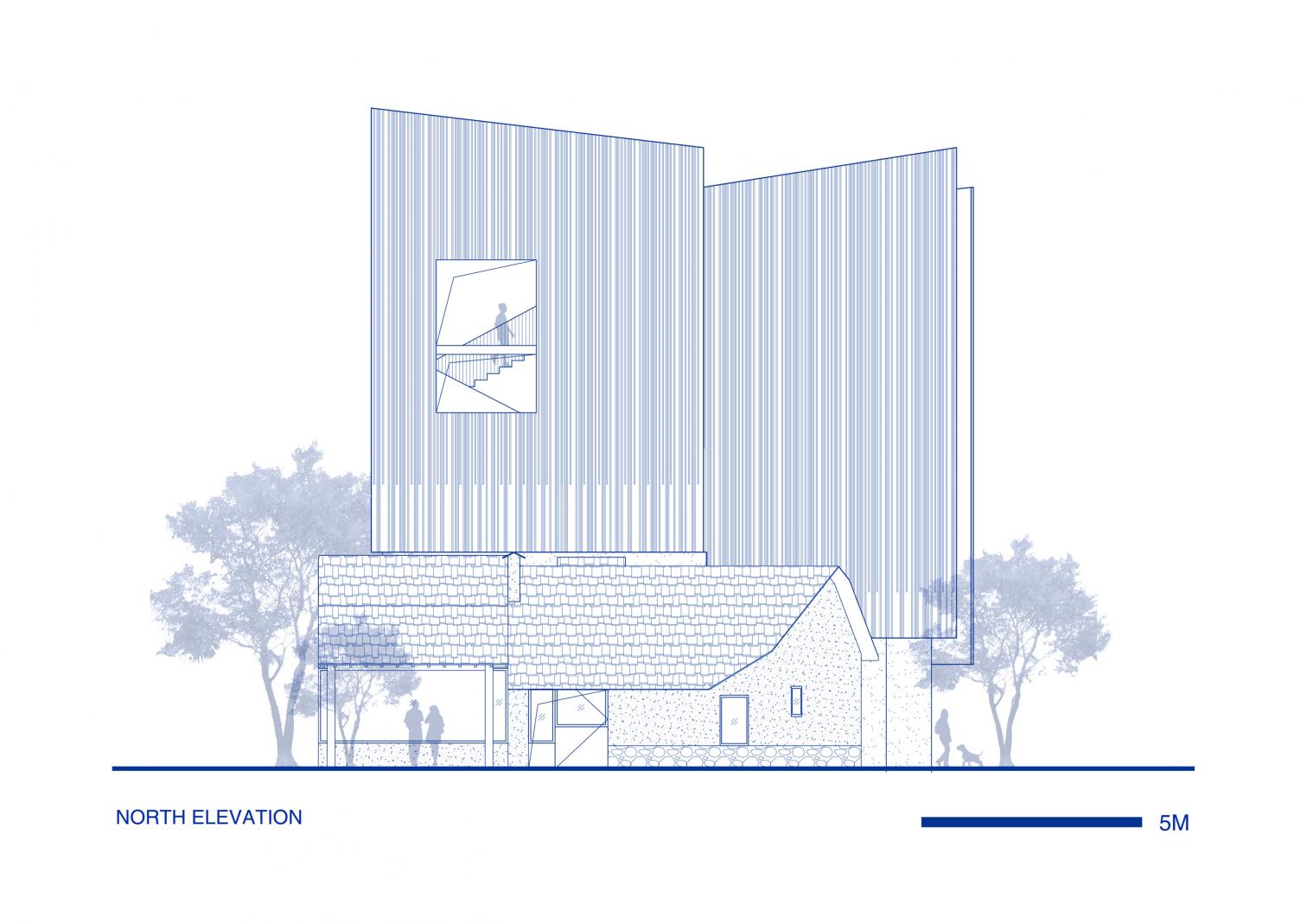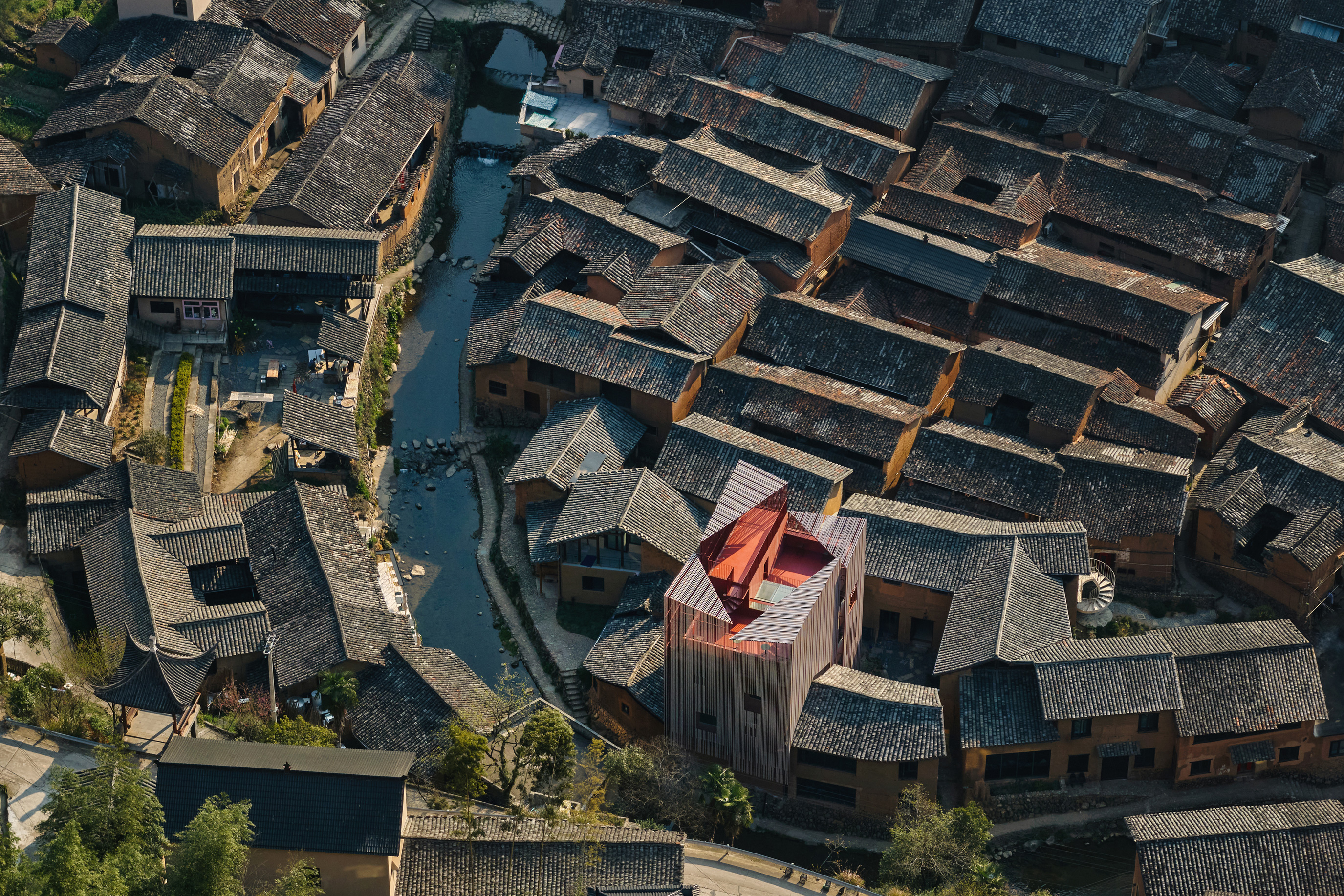The Quartet - Z Museum in Songzhuang
Team BLDG- Type Museum Refurbishment
- Material Metal Aluminum
- Date 2025
- City Songzhuang
- Country China
- Photograph Jonathan Leijonhufvud
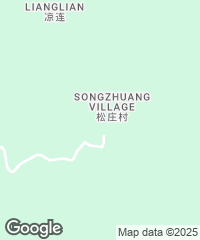
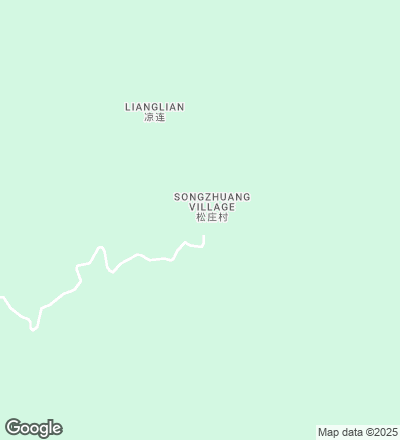
Located in a mountain landscape accessible through winding roads, the remote town of Songzhuang in the Chinese province of Zhejiang is home to the Z Museum of textile art. Devoted to the theme of weaving, it was built from a brick-and-concrete house raised in the 1990s. Instead of concealing its incongruity with the village context of traditional dwellings of rammed earth, the contrast was enhanced by means of a woven metal skin that echoes the museum’s content while redefining the building’s presence in the place.
The museum’s facade is totally wrapped in a lattice made of aluminum square tubes painted red on three sides and white on one. Arranged like yarns interwoven on a loom, these elements transform the building’s appearance throughout the day. Xiao Lei of Team BLDG explains: “Thanks to the red-and-white orientation of the aluminum slats, the building takes on subtle and ever-shifting hues throughout the day.” When it is sunny, it may appear as a translucent pink volume; on rainy or snowy days, it becomes a white monolith.
The building was vertically divided into four stepped volumes with courtyards in between, giving rise to a dynamic composition on the roof, connected by terraces at staggered heights. Thus the name The Quartet. The visitor route starts in the traditional dwelling of rammed earth, restored and turned into an entrance foyer. This dark space provides a sensory transition toward the museum’s contemporary interior, where a vertical atrium visually unifies the three exhibition levels.
The original windows were reconfigured to frame views of the rural landscape, and new openings were made to transform the third floor into a semi-outdoor space. From the roof, unobstructed vistas of Songzhuang’s rugged scenery reinforce the museum’s bond with its environs.
Architecture aside, the textile concept extends to the interior. In the café and store, the architects custom-designed a ‘LOOM’ furniture series inspired by traditional looms, replicating the facade’s weaving motif.
